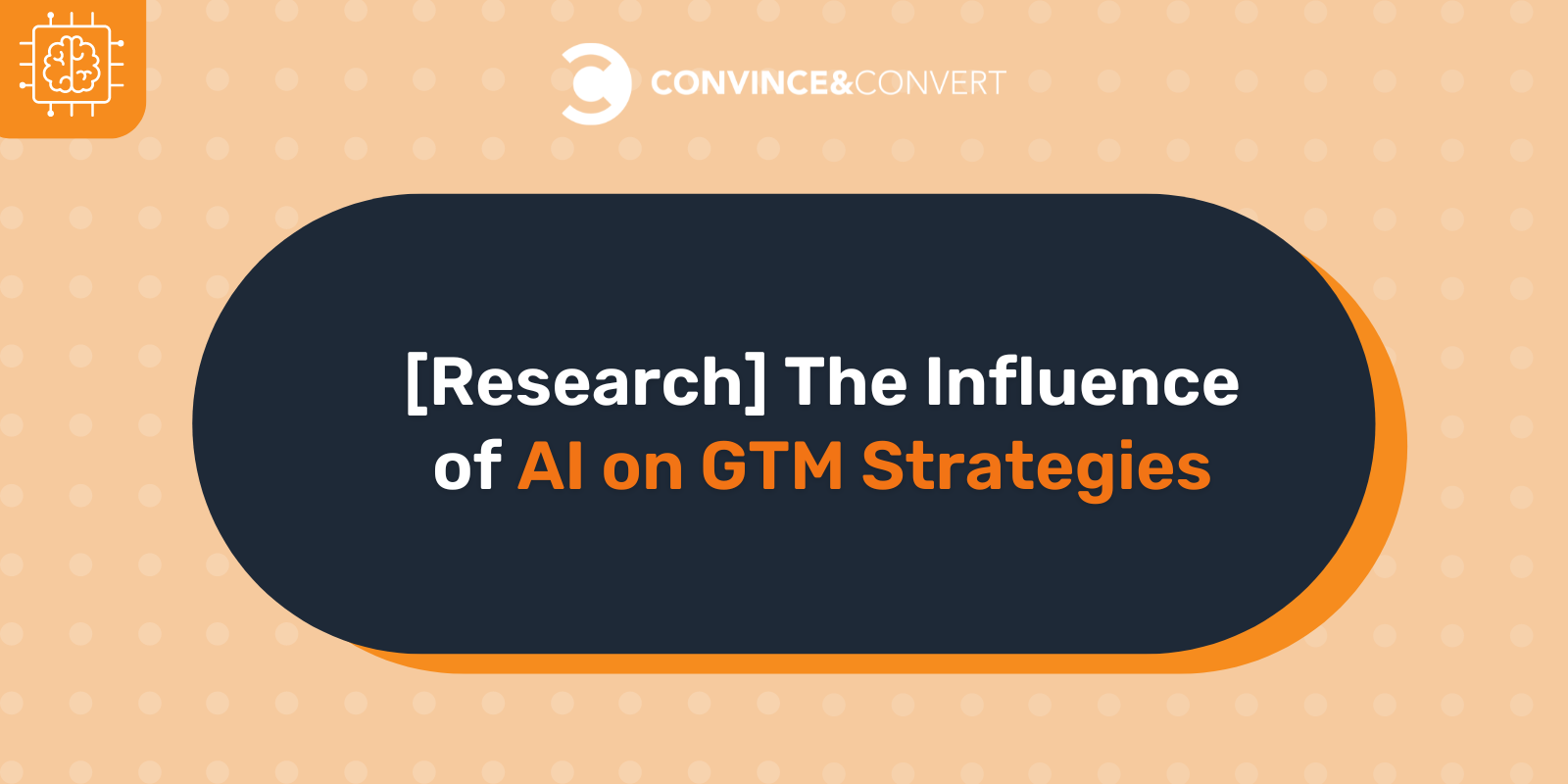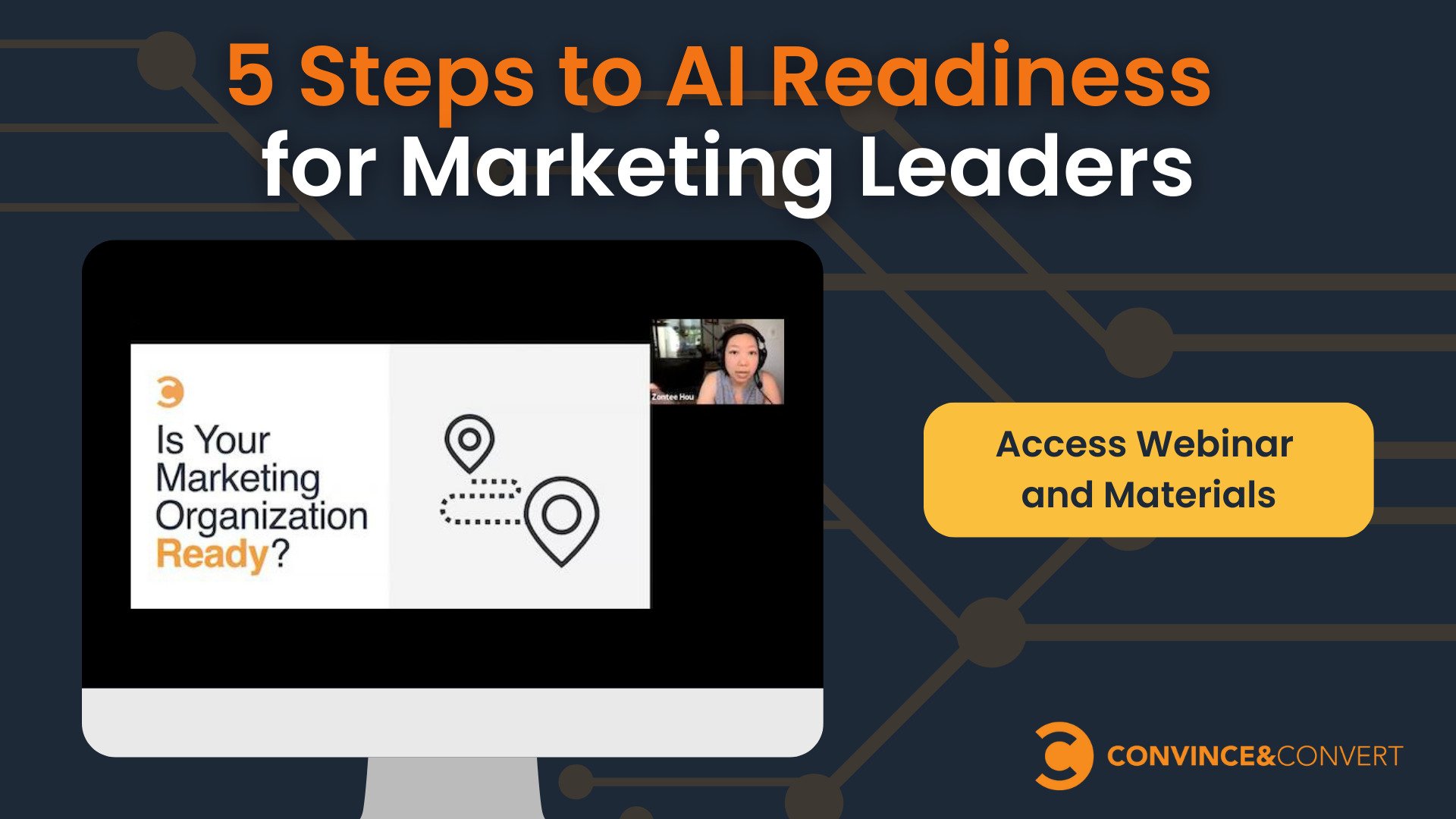
As artificial intelligence evolves rapidly, its profound impact on go-to-market (GTM) strategies cannot be overstated. From revolutionizing customer segmentation to optimizing marketing campaigns, AI is reshaping how businesses approach every aspect of their GTM efforts.
But what are the specific ways that GTM professionals are using AI? And what is working and not working?
New research by Aptitude 8 and Ascend2 helps quantify how GTM teams are currently using AI, the impact that AI has had on GTM strategy, what makes a successful AI-enabled technology stack, and where we can expect GTM teams to benefit from AI in the coming years.
Key findings highlighted:
- Room for improvement. Three-quarters of GTM teams have access to AI, but just 29% of GTM leaders report using AI to a great extent for their jobs.
- AI makes an impact. Teams that use AI are more likely to meet their goals. And the more you use it, the more significant the impact.
- Built-in is better. AI that is built-in to technology you already use has higher adoption and a bigger impact on performance against goals… But, right now, most companies (73%) don’t have built-in solutions in their existing stack.
- Robots aren’t replacing people yet. Most companies are increasing hiring due to AI, emphasizing AI skills. In fact, over half of companies already have or plan to hire someone to oversee the use of AI. Very few companies are decreasing their hiring due to efficiency gains.
The 23-page research study, How Go-To-Market Strategies are Evolving with AI, surveyed 275 go-to-market leaders across various departments to explore AI usage in GTM teams, its impact on strategy, successful AI technology stacks, and future AI benefits.
Here are a few insights and tips from the research study:
Insight #1: Top GTM Priorities
Strengthening marketing, sales, and customer success alignment is a top priority for over half of GTM team members surveyed and the most commonly reported area of focus overall. Team alignment is a consistent priority across all GTM departments surveyed.

Here are three tips to strengthen marketing, sales, and customer success alignment:
- Foster Open Communication Channels: Establish regular meetings or check-ins between marketing, sales, and customer success teams to encourage collaboration and information sharing. GTM teams can effectively align their efforts, share insights, and address challenges or opportunities by maintaining transparent communication channels.
- Implement Shared Goals and KPIs: Align marketing, sales, and customer success teams around common objectives and key performance indicators (KPIs). When everyone is working towards the same goals, it promotes synergy and ensures that each team’s activities contribute to overall success. For example, set joint targets for market penetration, customer retention, or revenue growth.
- Utilize Integrated Technology Solutions: Invest in integrated CRM and marketing automation tools that enable seamless data sharing and workflow coordination across marketing, sales, and customer success functions. By leveraging a unified tech stack, teams can access real-time insights, streamline processes, and deliver customers a more cohesive and personalized experience throughout their journey. This report looks at the current tools used by GTM teams.
Insight #2: Top Need of Improvement by Department
Efficiency also ranks among the top 3 areas needing improvement across each department, though marketing is the only department that did not list efficiency at the top of its list. In fact, less than half of marketers rank efficiency as a top area needing improvement, compared to 62% of sales and 60% of customer success professionals. Interestingly, marketing departments have higher adoption rates of AI, suggesting a correlation between AI use and efficiency.

Efficiency between marketing, sales, and customer success is paramount as it streamlines the entire customer journey, from initial engagement to post-sale support, ensuring a seamless and satisfactory experience. By enhancing coordination and alignment among these departments, GTM teams can eliminate redundancies, minimize delays, and ultimately boost productivity, leading to greater customer satisfaction and long-term success.
Insight #3: AI is Vastly Under-Utilized
While 75% of GTM teams surveyed report having access to AI, either through their existing technology with built-in AI, through integrations, or completely separate systems, only 29% of those surveyed report using AI to a great extent for their jobs, leaving seven out of ten GTM leaders who are not using AI extensively.

Need a place to get started?
Try implementing AI-powered personalization. Start leveraging AI algorithms to deliver highly personalized experiences to customers at every touchpoint of the GTM journey. Utilize machine learning models to analyze customer behavior, preferences, and past interactions, enabling you to tailor marketing messages, offers, and product recommendations in real time. You can increase engagement, conversion rates, and overall satisfaction by delivering relevant content and recommendations to each prospect or customer, driving business growth.
Insight #4: Areas That AI Is Extremely Effective
68% of GTM leaders who use AI for content creation find it extremely effective. Two-thirds of GTM leaders say AI is also highly effective for market research, analysis, measurement, and analytics.

Tip on using AI for market research and analysis.
Harness the power of AI for market research and analysis by employing natural language processing (NLP) algorithms to analyze vast amounts of unstructured data from social media, customer reviews, and industry reports, extracting valuable insights on consumer sentiment, trends, and competitor strategies. Additionally, leverage machine learning algorithms to forecast market demand, identify emerging opportunities, and optimize pricing strategies based on predictive analytics, enabling more informed and agile decision-making in response to market dynamics.
Insight #5: Evolution of AI for Marketing
Initially, marketers used AI primarily for content creation and predictive analytics, and just over one-third (37%) used AI for chatbots or virtual assistants. Few marketers used AI for lead scoring (23%) and social media listening (7%). Now, the use of AI by marketers for social media listening has tripled, and lead scoring is expected to double in the year ahead.

Tip on using AI for lead scoring.
Utilize AI for lead scoring by implementing predictive analytics models that analyze historical customer data and behaviors to identify patterns indicative of high-value leads. This allows you to prioritize and focus your sales efforts on prospects most likely to convert, optimizing resource allocation and increasing conversion rates.
Download the report for more insights and recommendations. Here is a link to download the report.

